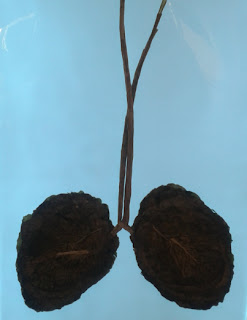Born in Torino, Italy in 1942, and currently living in Nottingham, Piero Gilardi influenced the development of Arte Povera (poor art) in Italy in the late 1960s. He was the most politically engaged artist of this art movement, always creating social relations through art, and from 1963 to 1985 he collaborated his work and ever since his work has always consisted of interactive sculptures and his creative work is influenced by social and political movements. Recent sculptures and work Gilardi has produced, explore anti-austerity and environmental campaigns in Italy, revealing him as an important precursor of participatory and socially-engaged art practices today.
His exhibition at Nottingham Contemporary features his interactive sculptures based on natural motifs, including his celebrated Nature Carpets. Gilardi’s Nature Carpets are highly colourful, realistic sculptures of slices of nature made from carved and painted foam. Gilardi encouraged people to use them, to pick them up and to lie on them, which goes against the norm of the strict 'Do Not Touch' rule in every gallery I have been to. He does this because he wants his work to offer new ways of thinking about an individuals interaction with his or her environment. He created the 'nature carpets' in 1965 thinking of them as examples of the interior décor of the outside, and foam to Gilardi felt welcoming and interacted with the body for its light playful function. Even though other early sculptures were designed to be worn as clothing but they are now too delicate to be physically engaged with but visitors are invited to interact with a few similar recent works in the exhibition. Being able to handle his work almost felt wrong. I still felt a pang of guilt, and at first I was double checking to see if it was really okay to touch Gilardi's work. This interaction combined with the theatrical stage-like appearance of his work, enhances the idea of being involved. Being part of the performance, as in the late 60's, at a time of great political turmoil in Italy, he left the art world altogether, becoming a “creative facilitator” of street theatre and demonstrations for a range of radical causes – workers’ revolution, the anti psychiatry movement, radical youth groups, and the rights of indigenous people around the world. This work took the form of making sculptural props and choreographing actions, which you can see in his current work he produces today out of his favourite cheap material; foam, carved and painted. The interactive material combined with realistic replicas of natural objects, I believe Gilardi truly exorcizes the death of nature.
His exhibition at Nottingham Contemporary features his interactive sculptures based on natural motifs, including his celebrated Nature Carpets. Gilardi’s Nature Carpets are highly colourful, realistic sculptures of slices of nature made from carved and painted foam. Gilardi encouraged people to use them, to pick them up and to lie on them, which goes against the norm of the strict 'Do Not Touch' rule in every gallery I have been to. He does this because he wants his work to offer new ways of thinking about an individuals interaction with his or her environment. He created the 'nature carpets' in 1965 thinking of them as examples of the interior décor of the outside, and foam to Gilardi felt welcoming and interacted with the body for its light playful function. Even though other early sculptures were designed to be worn as clothing but they are now too delicate to be physically engaged with but visitors are invited to interact with a few similar recent works in the exhibition. Being able to handle his work almost felt wrong. I still felt a pang of guilt, and at first I was double checking to see if it was really okay to touch Gilardi's work. This interaction combined with the theatrical stage-like appearance of his work, enhances the idea of being involved. Being part of the performance, as in the late 60's, at a time of great political turmoil in Italy, he left the art world altogether, becoming a “creative facilitator” of street theatre and demonstrations for a range of radical causes – workers’ revolution, the anti psychiatry movement, radical youth groups, and the rights of indigenous people around the world. This work took the form of making sculptural props and choreographing actions, which you can see in his current work he produces today out of his favourite cheap material; foam, carved and painted. The interactive material combined with realistic replicas of natural objects, I believe Gilardi truly exorcizes the death of nature.






